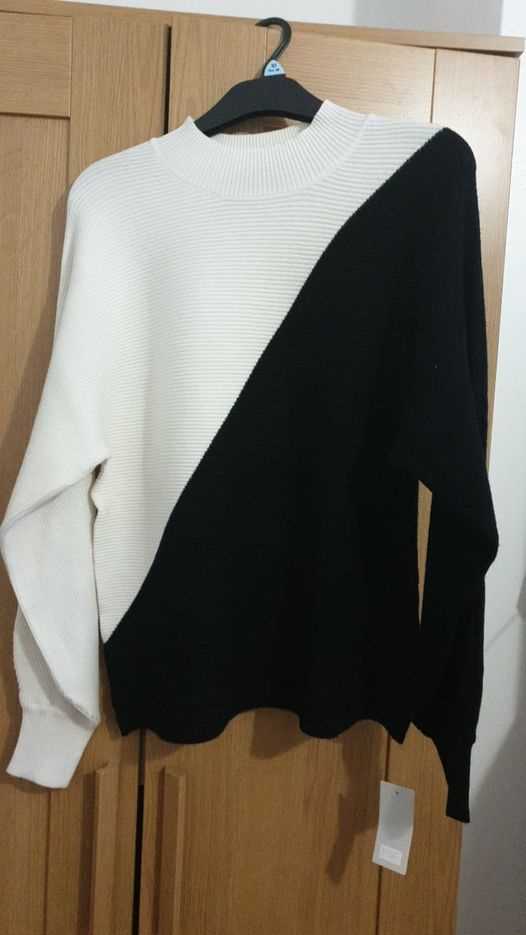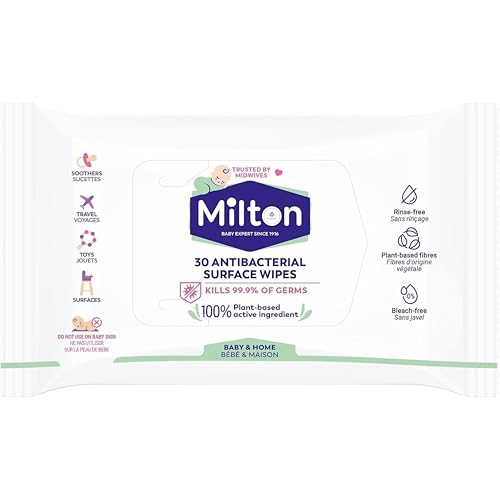




When it comes to doing laundry, one common question is whether you can wash black and white clothes together. Many people worry about the colors bleeding and ruining their garments. While it’s understandable to be cautious, the good news is that it is generally safe to wash black and white clothes together, as long as you take some precautions.
To prevent color bleeding and fading, it is recommended to sort your laundry by color. Separating dark and light-colored clothes can help preserve the brightness of your whites and prevent your blacks from becoming dull. You can use separate laundry bags or divide them into different loads to ensure proper sorting.
When washing black and white clothes together, it’s important to use a cold water setting. High temperatures can cause the colors to bleed, so opt for a gentle and cold cycle. Additionally, using a color-preserving detergent can help maintain the vibrancy of your garments and reduce the risk of color transfer.
It is worth mentioning that certain black garments, such as new jeans or heavily dyed fabrics, may initially bleed more than others. To be on the safe side, it is advisable to wash them separately or with like colors until the excess dye has been removed.
By following these tips and taking proper care of your black and white clothes, you can safely wash them together without worrying about color bleeding or fading. However, always remember to read the care instructions on your clothing labels for specific guidance, as certain delicate fabrics may require different treatment.
Can You Wash Black and White Clothes Together?
One of the most common questions when it comes to doing laundry is whether you can wash black and white clothes together. This can be a tricky question, as the result of washing these two colors together can vary depending on several factors.
Factors to Consider
There are a few factors to consider before deciding to wash black and white clothes together:
- Fabric Type: Different fabrics may react differently to the washing process. It’s important to check the care labels on your clothing items to see if they have any specific instructions for washing.
- Dye Quality: Some black clothing items may have a lower quality dye that can bleed or fade during the wash. This can result in the white clothes becoming discolored.
- Colorfastness: Colorfastness refers to the ability of a colored fabric to hold its color when washed. If the black clothing item is not colorfast, it may bleed onto the white clothes.
Tips for Washing Black and White Clothes Together

If you still decide to wash black and white clothes together, here are some tips to minimize the risk of color transfer or fading:
- Sort by Color: Separate your laundry into different color groups, including whites, darks, and colors. This will help prevent color bleeding and maintain the brightness of your white clothes.
- Use Cold Water: Washing your black and white clothes in cold water can help prevent color bleeding. Hot water can cause the dye to run and transfer onto other clothes.
- Choose a Gentle Cycle: Using a gentle cycle on your washing machine can also help minimize the risk of color transfer or fading.
- Use Color-Catching Sheets: Color-catching sheets are designed to trap and absorb any loose dyes in the wash. Adding one of these sheets to your laundry can help prevent color bleeding.
While washing black and white clothes together can be done with caution, it’s generally recommended to separate them to avoid any potential color transfer or fading. Following these tips can help maintain the quality and appearance of your clothes.
Reasons to Separate Dark and Light Clothing

- Fading colors: One of the main reasons to separate dark and light clothing is to avoid color transfer during the washing process. Dark colors, especially black, tend to bleed and transfer their color onto lighter garments. This can result in faded and discolored clothes.
- Staining: Light-colored clothes are more prone to showing stains, while dark-colored clothes can hide stains more easily. Washing dark and light clothing together increases the risk of light garments getting stained by any color bleeding from darker items.
- Prolonging garment life: Separating dark and light clothing helps to prolong the life of each garment. Colors that bleed onto lighter clothes can make them look worn out and dull. By washing dark and light clothes separately, you can help them stay vibrant and looking new for longer.
- Preventing lint transfer: Dark-colored clothes, especially black, tend to produce more lint. Washing dark and light clothing together can result in light-colored clothes picking up lint from the darker items, which can be difficult to remove.
- Preserving whites: Washing white clothes separately from colored garments helps to keep them bright and prevent them from becoming dingy. Whites can easily pick up color from dark clothes, resulting in a yellow or grayish appearance.
By separating dark and light clothing, you can ensure that each garment is treated properly and maintain their appearance for longer. It may require a little extra time and effort, but the benefits of sorting your laundry by color outweigh the inconvenience of washing them separately.
Tips for Washing Black and White Clothes

- Sort your clothes: Before washing black and white clothes together, always separate them into two different piles. This will prevent any potential color bleeding or transferring.
- Use cold water: When washing black and white clothes, it’s best to use cold water. This will help minimize the chances of colors bleeding and will also prevent shrinkage or fading.
- Choose a gentle cycle: Opt for a gentle or delicate cycle on your washing machine. This will help protect the fabric and maintain the overall quality of your black and white clothes.
- Turn clothes inside out: To further protect the colors and prints on your black and white clothes, it’s a good idea to turn them inside out before washing. This will minimize friction and rubbing against other garments.
- Avoid using bleach: Bleach can cause damage to both black and white fabrics, so it’s best to avoid using it altogether when washing these clothes together.
- Separate heavily soiled items: If there are heavily soiled or stained items in either the black or white pile, it’s best to wash them separately to prevent any potential staining or discoloration.
- Use color-catching sheets: Consider using color-catching sheets or laundry pods when washing black and white clothes together. These products help trap and absorb any loose dyes, preventing them from transferring to other clothes.
- Dry clothes properly: When it comes to drying black and white clothes, air drying is the safest option. Avoid using high heat in the dryer, as it can cause shrinking or fading.
By following these tips, you can help ensure that your black and white clothes maintain their colors and quality for a longer period of time. With proper care, you can continue to enjoy wearing these timeless pieces!
Expert Advice on Sorting Clothes
Sorting your clothes before washing is an essential step to ensure that your garments are cared for properly and do not get damaged. Here are some expert tips to help you sort your clothes effectively:
1. Sort by Color
One of the main factors to consider when sorting clothes is color. Mixing colored clothes with whites can result in color bleeding and staining. To avoid this, sort your clothes into separate piles based on their colors.
- Whites: Separate white clothes, including light-colored items like pastels and creams.
- Darks: Group dark clothes together, including black, navy, and other deep colors.
- Mediums: Clothes that have medium or muted colors, such as grays or earth tones, can be sorted into this category.
- Brights: Clothes with vibrant or bold colors can be sorted into a separate pile.
By sorting your clothes by color, you can prevent color transfer and keep your whites looking bright.
2. Sort by Fabric Type
Another factor to consider when sorting clothes is fabric type. Different fabrics require specific care instructions, so it’s important to separate them accordingly. Here are some common fabric types and how to sort them:
- Cotton: Sort cotton clothes together as they can withstand regular washing and higher temperatures.
- Synthetic: Synthetic fabrics, such as polyester and nylon, should be washed separately from cotton as they can trap lint and static.
- Delicates: Delicate fabrics like silk, lace, and chiffon should be washed separately from other clothes as they require gentle handling.
3. Sort by Care Instructions
Always check the care labels on your clothes for specific washing instructions. Sort your clothes based on their care requirements, such as temperature settings and washing cycles. This will help ensure that each garment receives the appropriate care it needs.
4. Consider the Soil Level
If your clothes have different levels of dirt or stains, it’s a good idea to sort them based on their soil level. This allows you to adjust the wash settings accordingly for each load, resulting in cleaner clothes.
5. Don’t Overload the Machine
Avoid overloading your washing machine, as it can affect the cleanliness and efficiency of your clothes. Instead, divide your sorted piles into smaller loads that your machine can handle easily.
By following these expert tips on sorting clothes, you can ensure that each garment gets the proper care it needs, resulting in cleaner, longer-lasting clothes.
Common Mistakes to Avoid

1. Mixing heavily soiled and delicate items: Avoid washing heavily soiled items together with delicate clothes as it can result in damage or staining. Separate these types of garments to ensure proper cleaning and care.
2. Not sorting clothes properly: It is essential to sort clothes by color and fabric type before washing. This will prevent color bleeding, fabric damage, and help maintain the quality of your clothes.
3. Overloading the washing machine: Avoid overloading the washing machine as it can affect the cleanliness of your clothes. Overloading prevents proper water circulation and may lead to inadequate cleaning.
4. Using too much detergent: Using excessive detergent can leave residue and damage the fabric over time. Follow the manufacturer’s instructions on the detergent packaging and use the recommended amount for your load size.
5. Ignoring the care instructions: Each garment has specific care instructions that need to be followed. Pay attention to the washing recommendations for each item to prevent shrinking, fading, or other damage.
6. Neglecting to check pockets: Before washing, always check pockets for items like tissues, pens, and other small objects. These can cause damage to the washing machine or lead to stains on your clothes.
7. Using hot water when not necessary: Avoid using hot water for every load. Some clothes, especially dark-colored ones, may fade or shrink due to hot water. Follow the care instructions and use the appropriate water temperature.
8. Not pre-treating stains: If you notice stains on your clothes, pre-treat them before washing. This can help remove stubborn stains and improve the overall cleanliness of your clothes.
9. Skipping regular machine maintenance: Regularly clean your washing machine to prevent buildup of dirt, detergent residue, and mold. Follow the manufacturer’s instructions for maintenance to keep your machine running efficiently.
10. Overdrying clothes: Overdrying clothes can lead to shrinkage and cause excessive wear and tear. Remove clothes promptly from the dryer or use lower heat settings to extend the lifespan of your garments.
By avoiding these common mistakes, you can ensure that your black and white clothes are washed together effectively and without any damage.
FAQ
Is it safe to wash black and white clothes together?
Yes, it is generally safe to wash black and white clothes together. However, there are a few precautions you should take to prevent any dye transfer.
What precautions should I take when washing black and white clothes together?
When washing black and white clothes together, it is recommended to turn them inside out to minimize the risk of dye transfer. Additionally, using a gentle detergent and washing them in cold water can help prevent any color bleeding.
Can I use bleach when washing black and white clothes together?
No, it is not recommended to use bleach when washing black and white clothes together. Bleach can cause colors to fade and may result in uneven dyeing. It is best to avoid using bleach and opt for a color-safe detergent instead.
What if my black and white clothes have different care instructions?
If your black and white clothes have different care instructions, it is best to follow the care instructions of the most delicate item. This will help prevent any damage to the more sensitive garment and ensure that both items are cleaned properly.
Can I use a laundry bag when washing black and white clothes together?
Yes, using a laundry bag can be a good idea when washing black and white clothes together. A laundry bag can provide an extra layer of protection and help prevent any dye transfer. Just make sure to choose a bag that allows water and detergent to flow through easily.
Can I wash my black and white clothes together?
Yes, you can wash your black and white clothes together. However, it is important to separate them properly to prevent any color bleeding. Make sure to check the care label on each garment for any specific washing instructions.
What can happen if I wash black and white clothes together?
If you wash black and white clothes together without taking proper precautions, there is a risk of color bleeding. The black dye from the black clothes can transfer onto the white clothes, causing them to become discolored. To avoid this, it is recommended to separate your black and white clothes and wash them in separate loads.










